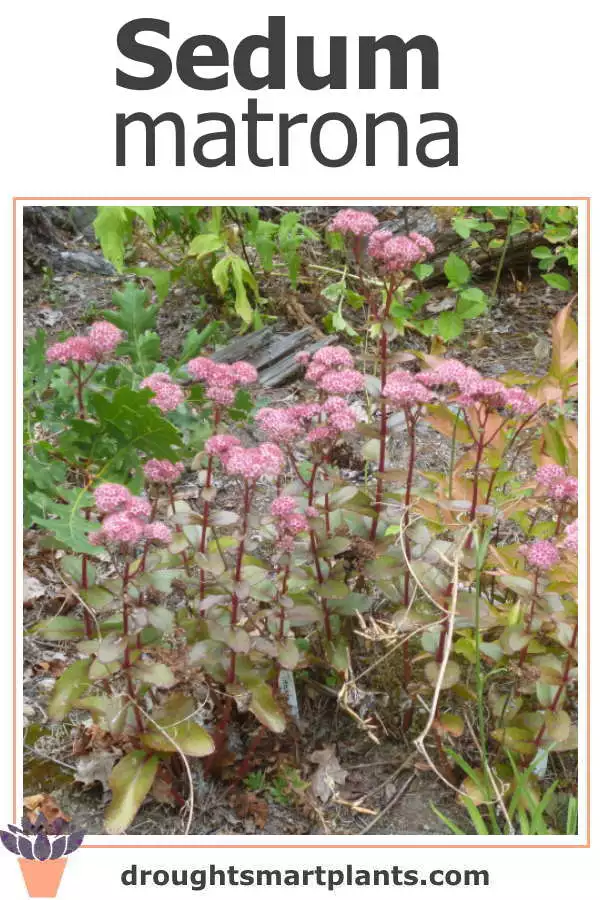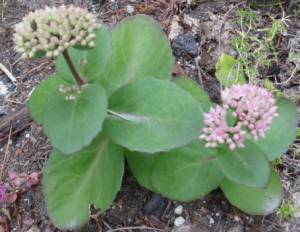A distinctive and different border Stonecrop
Sedum Matrona is one of the lesser known Sedum varieties. It has a more robust presence than some of the other border stonecrops that are commonly grown in xeric gardens, making it a little more challenging to fit into a scheme.

However, the colour of the stems and foliage is easier to work into your xeriscape design, being a tan colour with pink overtones, with the edging of the leaves outlined in a darker mahogany.
On a larger scale than most Sedum varieties, although not the tallest, the leaves are rounded, about 10cm (4″) long, spaced quite widely up the stems. The blooms are a light delicate pink, lasting from August until well in to September when they start to dry and turn a dark rust colour.
Like many other stonecrops, Matrona Sedum is valued for this trait, as it adds so much texture and winter interest to the xeric garden. Even under snow, the seed heads remain standing.
Propagate by division or by cuttings. They’re easy to root, no need for hormone or special treatment.
Divide the fleshy water storing roots in early spring; each growing point will make a new crown eventually. Stem cuttings root quickly if allowed to callous before planting.

Use Sedum matrona in borders and beds to add height behind other lower growing hardy succulents.
Nestled around her feet can be placed Sempervivum in some of the same tones such as Sempervivum ‘Kalinda’ or Sempervivum ‘Rita Jane’ which will add texture while remaining in the same colour family.
A combination of these three plants alone will be breathtaking for the entire season.
Other Sedum for groundcovers work well too, especially those with pale blue foliage such as Sedum cauticola and Sedum ewersii.
The rounded leaves of these Sedum varieties echo the texture of Sedum Matrona.
Combining many Sedum stonecrops in a tapestry set against the backdrop of the taller types gives the myriad textures and colours a place to contrast with each other.
Other uses for Sedum matrona include planting it in large swathes in combination with grasses and other perennial plants like Rudbeckia in the New American Landscape style.

